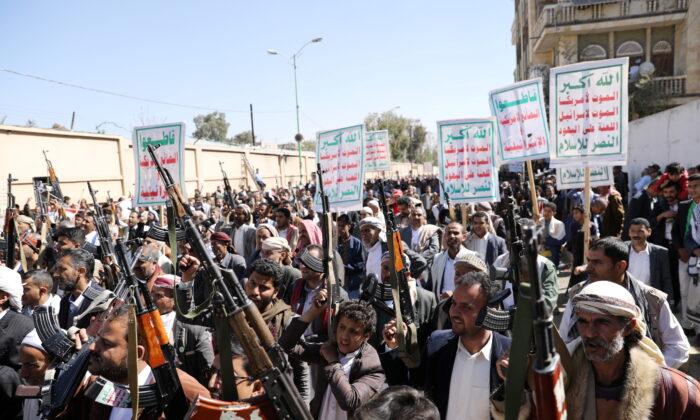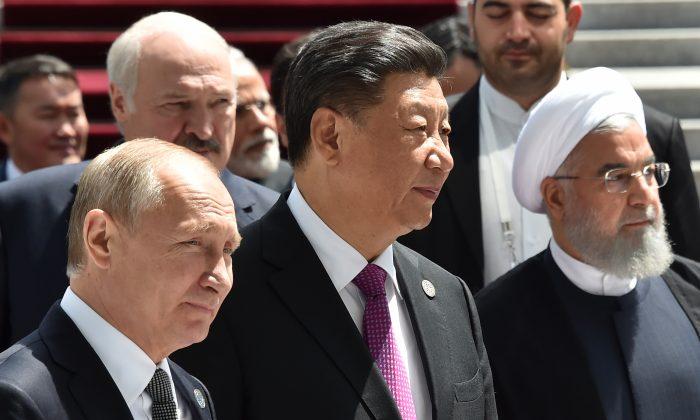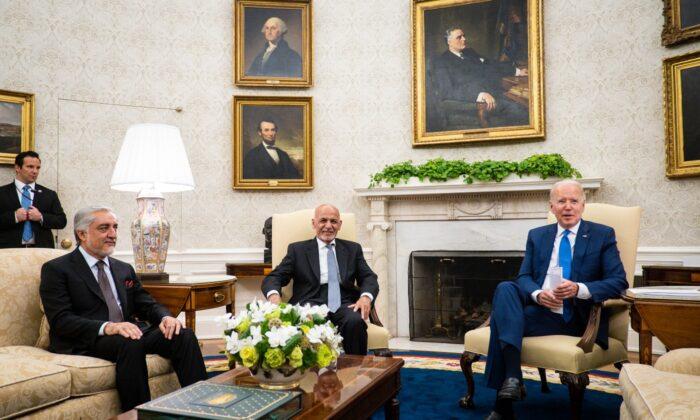Commentary
Everyone who wants to prevent nuclear war and expand economic opportunity should demand China’s dictatorship answer this question: Why is nuclear-armed mainland China militarily and diplomatically escalating its Himalayan border dispute with nuclear-armed India?
On June 8, the South China Morning Post—once an independent voice but increasingly a Beijing agitprop outlet—published an article touting the People’s Liberation Army’s Himalayan reinforcement operation.
I enjoyed the photo of PLA infantrymen seated on a jet transport while wearing surgical masks. Obviously, the troops regard the COVID-19/Wuhan virus as a threat.
Now, don’t make the mistake of caving to the pro-communist propagandists who damn the name Wuhan as “racist” and “a provocation.” What’s in a name? Place, not race. Place of origin, not ethnicity. Evidence: Rocky Mountain spotted fever (Rocky Mountains), West Nile virus (Uganda) and Lyme disease (Connecticut). Our global plague first erupted in Wuhan.
The Hong Kong paper’s photo caption said the troops were flying from the Hubei province. Wuhan is Hubei’s capital. Did the paper provide an intel indicator that the pandemic once again rages?
As for war between the Asian giants China and India? We have a five-decade cycle of tit-for-tat Chinese and Indian Himalayan border chest-pounding episodes followed by tentative reconciliation.
Yet the 1962 Sino-Indian War isn’t ancient history. Optimists note the 1962 Sino-Indian ceasefire has produced a kind of stability, but it is not a ratified peace treaty. Indeed, since 1962, frozen war has persisted at a literal level, with soldiers in snowfields. Frozen conflicts have the veneer of stability, but in fact, they are slow wars waged by diplomatic, economic and cultural means, and military buildups.
Nationalists in Beijing and New Delhi continue to use different names for disputed territories. For example, the Chinese refer to one disputed area as Southern Tibet. Indians call it the northern frontier of the Arunachal Pradesh state. The dispute involves water as well. China and India compete for Himalayan hydropower and water resources. Check the map. Call it the Yarlung Tsangpo-Brahmaputra River water war.
Armed conflict becomes more likely when Chinese and Indian leaders see their Himalayan disputes as either a convenient squabble serving domestic political ends or, much worse for planet Earth, a window of opportunity to gain a significant advantage over a major strategic adversary. Prospect No. 1 produces war by miscalculation. Prospect No. 2 produces war when one side decides to deny the aggressor a bloodless strategic advantage.
China’s dramatic economic contraction matters. I doubt China knows the exact percentage points, but thanks to its COVID-19/Wuhan virus cover-up, Beijing’s tendency to put lipstick on ugly numbers has become a global reputation for bald-faced lying.
Add this reasonable assumption: China’s economy will not see its 1990-to-2017 growth rates. The U.S. decision to decouple supply chains, Western Europe’s slow but similar response, and an understandable though little analyzed anti-Beijing reaction in Africa and southwest Asia support this assumption. Some economists argue that in 2019, the United States surpassed China as India’s largest trading partner.
The Chinese Communist Party feels threatened by economic decline, Hong Kong’s resistance and pandemic pushback. In the 20th century, the CCP attracted domestic political support by demanding the return of treaty ports like Hong Kong. Beijing’s current South China Sea expansion and pursuit of “traditionalist” claims on Himalayan territory repeat this motif. Hence the most likely scenario: Beijing is chest pounding to gain domestic support.
However, if someone on a glacier starts shooting, a brief Sino-Indian War 2020 (the War for Southern Tibet) where China launches a limited invasion with the goal of pushing the border 20 miles south in either the eastern or western sectors cannot be totally dismissed. After the territorial “bite,” China would call for a ceasefire to avoid escalation to nuclear war and offer to negotiate a permanent border. This fact argues against a significant Chinese advance. In 1962, Beijing acclimated its infantry to high altitudes. New Delhi did not. In 2020, both sides’ front-line forces are acclimated. The boys from Hubei? Not yet.





